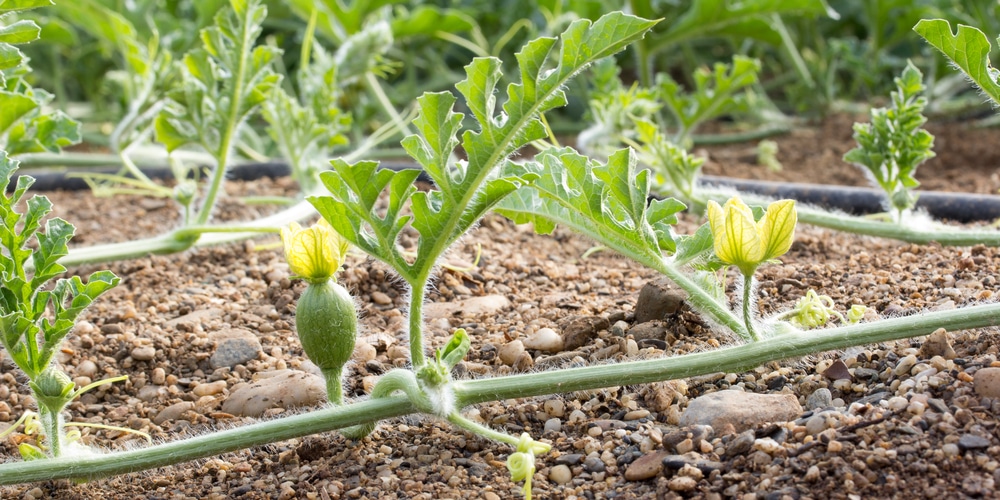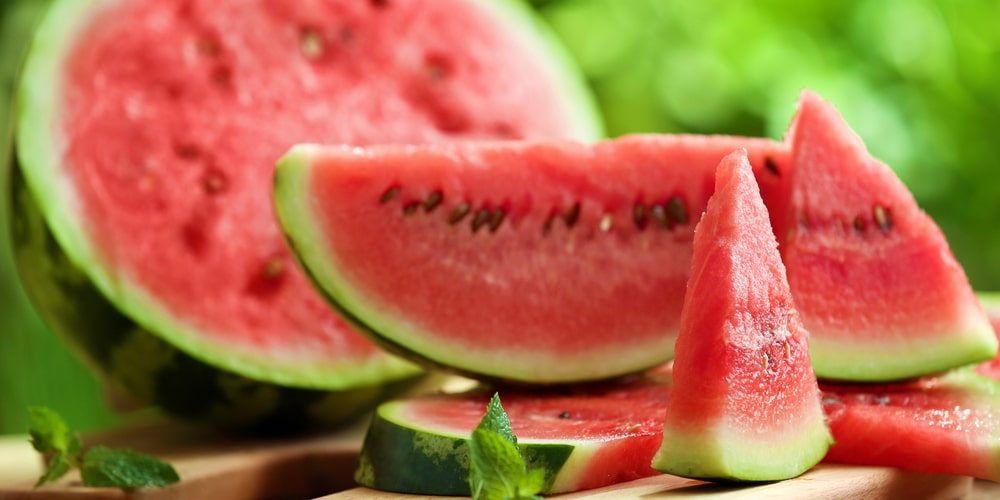Watermelon blossoms need to be pollinated to produce fruit. Growing watermelons is fulfilling as these plants produce tasty fruits. If you’re looking to grow a bumper harvest to refresh your family throughout the hot summer days, you’ll need to take good care of the flowers.
This article will look at how to successfully grow a watermelon and give details of the purpose of flowers in fruit production.
Watermelon blooms
It can take between two and three months to successfully grow a watermelon (Citrullus lanatus) plant. During the watermelon flower’s lifecycle, a small yellow flower will develop. The flowers will be either male or female, and both blooms will be required in order to pollinate and produce fruit.
The male flowers will appear on your plant first and grow on vines. These can be identified by their thin stems, and pollen will also be visible within the flower. Watermelon plants generally produce seven times more male flowers than females. The female flowers will grow after the males and look slightly different. They have a fuller shape as they contain unripe fruit.
Watermelon flowers are pollinated by insects such as bees and butterflies. If your vegetable garden doesn’t have many pollinators visiting, you may need to self-pollinate your watermelons. If the weather has been bad, there may be fewer bees and other insects about.
How to pollinate watermelon blossoms
If you decide to pollinate your watermelon blooms yourself, you should follow these simple steps:
- First, identify which flowers and male and which are female.
- Remove a male flower and press it into the female flower.
- Alternatively, use a paintbrush to pick up some pollen off the male flower and put it into the female flower.
- Keep an eye on your female flowers after pollination and wait and see if the middles start to become enlarged.
- If a small bulge forms, this is an indication that you’ve been successful as the fruit has started to grow.
The fruiting stage
Once the female flowers have been pollinated, the fruit will begin to grow as a bulge behind the flower. You should provide your watermelon plants with plenty of water during the fruiting stage. Watermelons need plenty of water and a sunny climate to produce sweet juicy fruit. If you don’t water your plant enough, the fruit may not develop correctly and won’t be as juicy. That being said, you should be careful not to overwater your watermelon plants as this could cause root rot.
Watermelon Blossoms: Conclusion
Watermelon blooms are essential for fruit production. Without pollination, the melons won’t develop. If you have a lot of bees in your garden, this shouldn’t be an issue, though. When the watermelon fruit develops, it will replace the flower that grew at the vegetative stage. This is why one plant can produce several melons. The best time to pick your watermelons will be when the tendril next to the fruit turns brown and is dried up. You can also use a knife to ensure there’s no resistance as you cut through the watermelon’s stem.
Related article: Average Watermelon Weight

